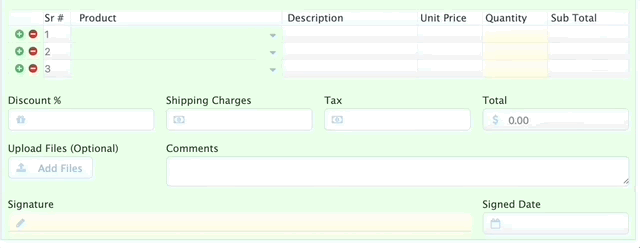As organizations face increasing competition, business leaders must look for ways to increase efficiency and decrease operational costs.
Many are turning to business process management software (BPMS) to improve their processes and achieve organizational goals.
But what exactly is BPMS, and how can it help your company streamline its operations?
Keep reading to find out. This article will shed more light on the meaning of BPMS, including the benefits it offers and how you can get started.
- What Is Business Process Management (BPM)?
- What Is Business Process Management Software (BPMS)?
- The Benefits of Implementing BPMS
- How to Successfully Implement BPMS
What Is Business Process Management (BPM)?
Let’s start by defining “BPM.”
Business process management (BPM) is the practice of analyzing a business process and executing changes to improve its efficiency.
A process is a set of activities that help you achieve an organizational goal. Examples include processing purchase orders, procuring goods, and onboarding employees.
Processes are important because they describe how employees should carry out everyday tasks, which helps to set expectations and create accountability.
However, processes aren’t always efficient.
Employees spend 60% of their time on “work about work” — activities like searching for documents, duplicating efforts, etc. These inefficiencies can add up over time and have a negative impact on your bottom line.
BPM is an ongoing activity that aims to continuously evaluate and improve existing processes. It consists of the following stages:
- Design: Analyze an existing process and break it down into individual steps. Determine how you plan to overcome any inefficiencies.
- Model: Outline the sequence of steps in a workflow. You can create these by hand or use visual workflow automation software.
- Execute: Execute improvements to your workflow. Consider testing it out with a small group of users before rolling it out across your organization.
- Monitor: Monitor your new process and track key metrics. This is also when you’ll get feedback from users.
- Optimize: Continue to optimize the process by repeating the steps above.
Following each of these steps can help your company reduce costs, minimize errors, and save time. But managing and executing these steps requires the right BPM software.
What Is Business Process Management Software (BPMS)?
Business process management software (BPMS) is a tool that lets you model and analyze existing processes. It includes the tools you need to implement improvements and monitor changes.

A BPM tool uses the following technology to support the business process management life cycle:
- Electronic forms: Most real-world processes incorporate one or more forms. But using paper forms for everyday processes isn’t practical, as it’s time-consuming and prone to errors. A BPM tool like frevvo includes a form builder that lets you create and customize electronic forms for your processes.
- Workflow diagrams: Creating a workflow diagram can reveal inefficiencies that you may not have noticed before. The easiest way to create a diagram is to simply draw one and write out each task by hand. But the right BPM tools will include a visual workflow builder so that you can map and document each step of a workflow.
- Business rules engine: Business rules add dynamic behavior to your forms and workflows. For example, you can create a rule that validates formats and another that routes forms based on certain conditions. Applying rules to your workflows can help facilitate process automation.
- Digital signatures: Collecting handwritten signatures could take days or even weeks if multiple approvers are required. A BPM tool like frevvo makes it easy to add digital signatures to your forms. It uses advanced encryption to authenticate the signatory’s identity.
- Testing tools: When you re-engineer a business process, it’s important that you test new changes first before you deploy them. BPM tools typically include testing features that let you run through an entire process to see how it behaves.
- Analytics: When making any changes, you need to continuously evaluate their performance. BPMS includes in-depth analytics and custom reports that you can review to measure how well your efforts are working.
In short, BPMS is an invaluable tool that helps you improve your operations and eliminate bottlenecks. It allows you to replace complex paper-based processes with more efficient processes.
The Benefits of Implementing BPMS
Companies in the early stages may rely on manual processes to get work done. But these processes can quickly turn into bottlenecks and affect performance in the long run.
Here are some of the key reasons to implement BPM software.
Increases Efficiency
Manual processes not only hurt overall productivity, but they are also time-consuming and prone to errors — for example, an employee may enter data incorrectly or forget a step in a process. Fixing these mistakes creates unnecessary delays.
BPM tools improve efficiency as they help your company standardize a process and automate repetitive tasks. Proper implementation can lead to faster turnaround times.
As an example, companies with manual processes spend 45 days and $15 on average to process a single invoice. In contrast, companies that use automation tools and digital processes spend just five days and $2.36.

With BPM software like frevvo, you can create automated workflows and make processes like invoicing more efficient.
You can deploy the time you recover in more beneficial ways, such as improving customer satisfaction or launching a new product.
Enables Dynamic Behavior
Processes are rarely static and may change based on who’s initiating them. Likewise, you may have forms that require additional information under certain conditions.
The best BPMS tools feature business rules, which allow you to add dynamic behavior to your forms and workflows.
Common examples of business rules include:
- Showing or hiding form controls based on a selection
- Automatically calculating subtotals and totals
- Making certain fields required (e.g., signatures)
- Populating fields with the logged-in user’s information
Here’s an example of frevvo’s Visual Rule Builder:

This rule will display sections of a form only if a manager is reviewing it and hide them otherwise since they are not relevant.
Another common example is adding a rule that automatically routes a purchase order or invoice to a senior executive if it’s above a certain value. This can help streamline processes and prevent a backlog of work.
Facilitates Continuous Improvement
Processes can stagnate and become inefficient over time. BPMS facilitates continuous process improvement — the practice of making incremental changes to a process over time.
One small change likely won’t be enough to improve a process. But slowly implementing new changes can result in significant improvements over time.
With BPMS, organizations can measure their efforts and continue to refine their processes. 75% of organizations say that BPM technologies have helped them accomplish their goals.
BPM tools like frevvo include reports that let you measure the performance of a workflow and track key metrics like cycle times.

As you start to make new changes to your processes, you can monitor your efforts and continue to refine them.
Improves Compliance
Companies face a multitude of compliance requirements. Failure to comply can result in heavy fines and damaged reputations.
BPMS can help your company implement and enforce strong internal controls to ensure that employees follow established procedures.

As an example, Varex uses dynamic business logic to require customs compliance information for international shipments, but it hides this requirement for domestic shipments. The logistics team can’t prepare an international order unless all the required regulatory information is filled out.
Now that you know how a BPM tool can help your company become more efficient let’s take a look at how to get started.
How to Successfully Implement BPMS
Implementing BPMS offers numerous benefits. But as with any important initiative, it’ll take some time and effort before you start seeing tangible results.
Follow these steps to get started.
1. Choose the Right Platform
Before you can create and optimize your processes, you need the right platform — one that supports each stage of the BPM life cycle.
Look for BPM software with the following features:
- Visual diagramming tool
- Drag-and-drop form designer
- Visual rule builder
- Role-based access control
- Business system integrations
- Mobile features
- Data protection
- Reporting
Depending on your industry and location, you may also require:
- ADA/WCAG compliance
- Multi-language support
You want to look for a tool that everyone on your team can use. If a BPM system is difficult to use, you can expect low adoption rates.
2. Start Small
Implementing BPM can help your company achieve operational excellence. But, most organizations have dozens if not hundreds of processes. Rather than tackle everything upfront, make changes on a small level before you scale them up.
Start with just one process to automate using a BPM tool. Ideally, you should pick a process that’s not too complex and that employees perform on a regular basis.
However, you’ll want to avoid any critical processes for now. Any missteps could disrupt your operations (and result in unhappy customers) until they’re addressed.
Implement BPMS on a manageable process like travel reimbursements. Then you can start scaling your efforts to other processes as your team becomes more proficient.
3. Identify a Process Owner
A process owner plays one of the most important roles in BPM implementation. This individual is given full responsibility and authority for managing a process.
Their responsibilities include:
- Defining the process objectives and goals
- Developing and implementing process improvements
- Monitoring performance against key performance indicators (KPIs)
- Creating documentation and other resources
- Communicating process changes to stakeholders
Choose a process owner to be in charge of a process. These individuals are typically in management, but this isn’t a hard rule.
4. Involve the Entire Team
In order to get your BPM efforts on the right track, it’s important to involve your team and communicate your plans. While it may sound obvious, 80% of employees report feeling stressed at work because of ineffective communication.

Keeping your team involved is a great way to increase engagement and to make sure that your shiny new automated process gets adopted instead of sitting on the shelf. When employees have a chance to impact the project, they’re far more likely to actually use it.
Another reason is that they might have valuable input or suggestions on ways to improve a process.
5. Create a Workflow Diagram
Creating a workflow diagram can reveal areas of improvement. Before you create one, you’ll want to collect as much information as possible.
Speak with those who are directly involved in a process. What tasks do they perform? What resources do they need? Do they have any feedback or suggestions?
Use these insights to create a workflow diagram. Then have the process owner perform a process analysis to identify redundant steps or tasks that you can automate.
Let’s use purchase orders as an example.
If employees are spending a lot of time on data entry, a change that the process owner can implement is to have the form pull in product details from a database and perform calculations automatically.
Here’s an example of how this looks:

Making these changes can help reduce manual entry and minimize errors.
Try out the purchase order template above here.
6. Test Before Deploying
Even if you’re making a minor change to a process, make sure to test everything. You can test your workflows in frevvo and preview how they’ll look on mobile devices.
Here’s an example of how a mobile form looks in frevvo:

Everything should work as you designed it. Have your team test the new workflow and get any feedback from them. Then make any new changes before deploying it.
7. Provide Training
If users don’t know how a BPMS tool works, they’ll be less inclined to use it. Make sure to provide training for your entire team and create resources they can use if they need help.
Consider putting together a standard operating procedure (SOP). This is a document that breaks down each step of a process.
8. Measure and Optimize
Even after you implement new changes to a process, your process manager should ensure it continues to run efficiently and look for ways to improve it.
Make sure to track key metrics like cycle times and collect data about how the new process performs. Using a BPM tool like frevvo will allow you to track KPIs via an analytics dashboard, so you can monitor performance and pinpoint bottlenecks.
9. Communicate Success
Celebrate meaningful success milestones with everyone involved and make sure to publicly give credit where it’s due. Take the time to acknowledge people’s efforts e.g. through a spot reward. It’ll go a long way towards facilitating real change as long as it’s for real, measurable gains.
Conclusion
Businesses today must strive to make their operations as efficient as possible to stay competitive.
Using a BPM solution like frevvo is a good place to start. The platform offers a powerful set of features that support each stage of the BPM lifecycle — use it to map your processes, automate mundane tasks, measure performance, and much more.
Get started today with a free 30-day trial to test drive the workflow software for yourself.


